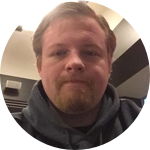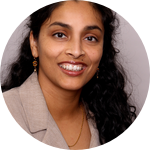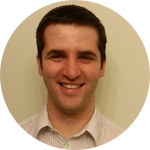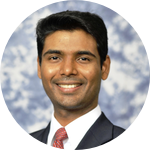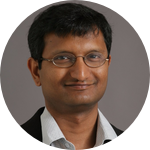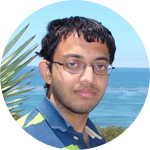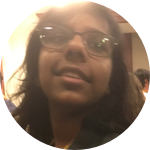About This Project
Soap Lake, an extreme alkaline lake located in Washington State, is renowned for its “healing effect” since before the advent of antibiotics. This leads to an intriguing hypothesis -“Do microflora that thrive in Soap Lake produce unique bioactive molecules with antibiotic properties?” Our project attempts to answer this question using microalgae isolate obtained from Soap Lake. The main objective is to identify bioactive metabolites with measurable antimicrobial/antifungal properties.
Ask the Scientists
Join The DiscussionWhat is the context of this research?
To survive in natural environment and compete with other microorganisms for food resources, microalgae are known to develop defensive mechanisms that inhibit the growth of competing strains.
During long-term cultivation studies (>6 months) in open ponds at Toledo (Ohio), we have observed that cultures of microalgae from Soap Lake remain uncontaminated by bacteria and fungi. Even when the cultivation medium was supplemented with sugars, the microalgae cultures were able to outcompete (or fend-off) other parasites; presence of sugars normally promotes the growth of competing “rogue” micro-organisms.
In this context, we hypothesize that the robust growth observed with Soap Lake microalgae could be due to the production and excretion of antimicrobial and antifungal compounds.
What is the significance of this project?
Considering the rapid emergence of antibiotic-resistant pathogens, it is imperative that we strive for newer but sustainable therapeutics. In this context, bioactive compounds derived from natural environments may offer gentle, yet effective alternatives to synthetic antibiotics.
The simplicity of the proposed concept permits a “project-based science” approach that could be easily carried out in the laboratory. We propose to involve two local high school students in this scientific query, with the intent that such engagement would encourage these young minds to pursue STEM-related careers.
What are the goals of the project?
There are two primary goals for this project:
1) To investigate bioactive metabolites from Soap Lake microalgae and assess their antibacterial/antifungal properties.
2) To provide hands-on STEM research experience to two female high school students.
Budget
Dr. Viamajala’s laboratory at the University of Toledo will provide the necessary facilities and supplies to carry out the experiments.
Funds received will be used to provide stipends to the high school interns, and to support their travel to present their research findings at regional science fairs. We believe that this financial reward will serve as a tremendous incentive to the participating students engaging in rigorous scientific research at a young age.
Endorsed by
Meet the Team
Agasteswar Vadlamani
I graduated in 2016 with a doctorate degree in Biomedical Engineering from the University of Toledo. Whilst my long-standing interest has been in the field of biofuels and other high-value products derived from biomass, I have developed a great appreciation for the extraordinary power of the photosynthetic organisms, especially microalgae, and their ability to fix atmospheric carbon and simultaneously convert it to energy-rich molecules.
My doctoral dissertation is on identifying and addressing the challenges associated with outdoor cultivation of alkaliphilic microalgae. I was able to demonstrate that high pH conditions alone (pH of growth medium >10) can sustain long-term viability and maintenance of these microalgae species, without requiring a dedicated carbon dioxide supply.
These initial research findings lead me to focus on: (1) the interplay between carbon concentrating mechanism and the photosynthetic parameters in alkaliphilic algae, and (2) the role of inorganic bicarbonate/carbonate pH buffers on the growth process. These insights, in turn, helped us tailor the growth medium appropriately to achieve significantly improved productivities. I also developed a novel mixotrophic cultivation strategy for alkaliphilic algae that not only works under outdoor non-sterile conditions but also leads to rapid growth kinetics. My Ph. D. research has lead to multiple journal article submissions and a patent filing. Beginning the Spring of 2017, I have joined the algae research group of Professor Viamajala as a post doctoral fellow.
I will be directing the proposed project under the guidance of professor Viamajala and will be responsible for monitoring the progress of the interns involved in the project.
Nisha Luke
I am currently enrolled as a senior in Sylvania Southview High School and have been accepted to the University of Toledo's College of Life Sciences and Mathematics as a Biology major for autumn of 2017. Some of my extracurricular activities include interning in Dr. Viamajala’s biochemical engineering lab, playing piano, performing and teaching various types of Indian dance, and competing in mostly life-science related events in Science Olympiad, including Anatomy and Physiology, Disease Detectives, and Hydrogeology. I am highly interested in furthering my research in micro-algae with this project; so far, I have assisted Alessandra Krusciel with the harvesting process of this alkaliphilic algae and have created a lab report with a statistical analysis of algal properties and the previously focused-on experiment that is to be published in a video article format by the company JoVE.
The abstract for this experiment thoroughly excites me because I am very intrigued by the study of antibiotics, based off of my prior studies of human health and wellness. After studying algae in Dr. Viamajala's lab for the past seven months, I think this will be a fascinating step forward in the field of environmental and biochemical engineering.
Priya S. Varanasi
I am a junior in Pelham Memorial High School (PMHS) in Westchester County, NY. Prior to transferring to PMHS (in Fall of 2016), I completed my freshman and sophomore years in Ottawa Hills High School (OHHS) in Toledo, OH. All through my high school, in addition to striving for high academic achievement, I tried to stay as a well-rounded student: I am a varsity-level field hockey player, I participate in theatre, chorus and band, and I am also a member of the French and Human rights clubs. I was a member of the OHHS Choraliers group that performed at Carnegie Hall in New York during February 2016. I was selected to be a member of National Junior Honor Society and recently inducted into National Honor Society.
During the summer of 2016, I did a twelve-week internship in professor Sridhar Viamajala’s laboratory at The University of Toledo, OH, and studied “micro-algae cultivation and processing”. During this period, I was exposed to and intrigued by the unique traits of extremophiles, and chose to focus on alkaliphilic algae (isolated from Soap Lake, WA). Specifically, I explored “auto-fermentation of alkaliphilic micro-algae under dark anaerobic conditions for producing organic-acids”; these organic acids are precursors useful for synthesizing bio-fuels and materials.
During the discussion that took place while I was working with Dr. Viamajala’s research team, we always wondered: “how is the Soap Lake algae able to thrive and grow in a robust manner under harsh open-pond cultivation conditions, without being taken over by other competing microbes?” It is speculated that the algae might be secreting some bioactive compounds that would suppress the growth of predators. Through this proposed project, I would like to verify this hypothesis.
Project Backers
- 37Backers
- 108%Funded
- $3,251Total Donations
- $85.55Average Donation
